Ketchikan whale watching and wildlife viewing excursion: Alaska Bird Species What birds can we see on our tour?
Tongass National Forest, Whales, Stellar Sea lions and Seals
Nowhere in the world will you find more bald eagles than Southeast Alaska! Ketchikan, Alaska makes up this territory as the highest density of nesting sites in the world. This makes for an amazingly rich environment to view bald eagles in the wild. Mature bald eagles are recognized for their white head, while the juveniles take years to develop this distinctive characteristic, making it more difficult to spot the juveniles in the trees. For Alaska natives, these birds represent a spiritual symbol and are admired for their beauty. Year after year eagles gorge themselves on the abundance of salmon running up local streams making for a picturesque sight for all visitors. Not to mention that the sheer gracefulness of a mature eagle soaring overhead is truly captivating. You can easily spot mature eagles in the trees along the waterways by picking out their distinctive white head through the lushness of the green on the trees. We always say to look for the golf balls in the trees.
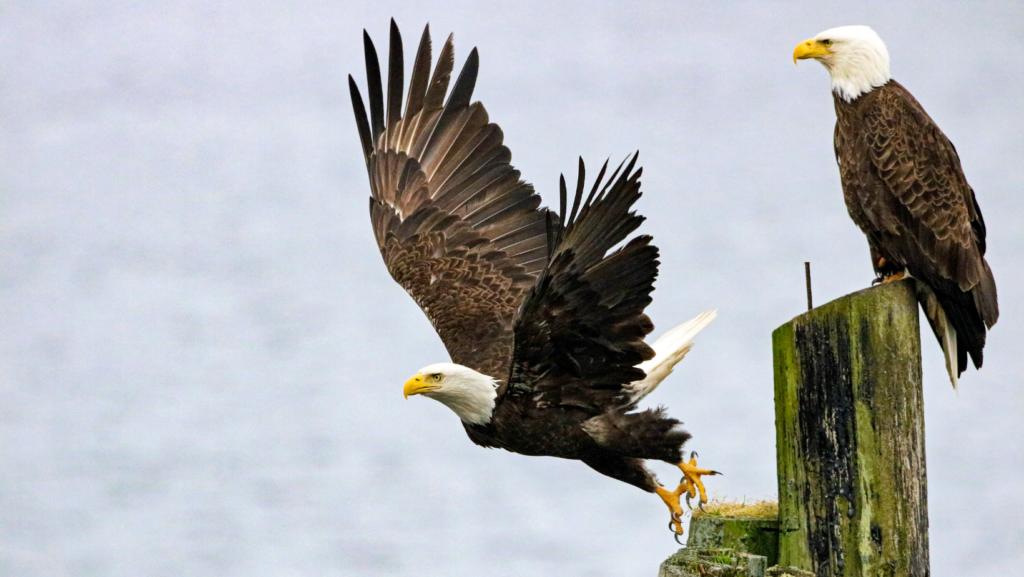
RAVENS
The Raven ranks as my top favorite bird in Alaska. Ravens have amazing vocal capabilities, incredible acrobatic skills and freakish intelligence. Some of my favorite things about the Raven is that they can imitate a human voice as well as water droplets hitting the water. They also have the ability to solve critical issues and get into food by lifting doors and opening lids. They really do think through situations and solve them so effectively. One of my favorite things to watch about the Raven is when they perform aerial acrobatics on the tops of mountains in the updraft as the wind hits the peaks, they come spiraling down and glide back up to perform it again. Always remember to secure and hide all food when Ravens are present, as they have the innate ability to find unpackaged and eat whatever food or bait you have around.
Alaska SeaBirds: Marbled Murrelets, Herring Gulls, Common Murre
The marbled murrelets, herring gulls and the common murre are the bird species that make up the majority of the offshore and nearshore waters. These sea birds feed on similar food sources as salmon and whales, which is why they cohabitate these nutrient rich waters collectively.
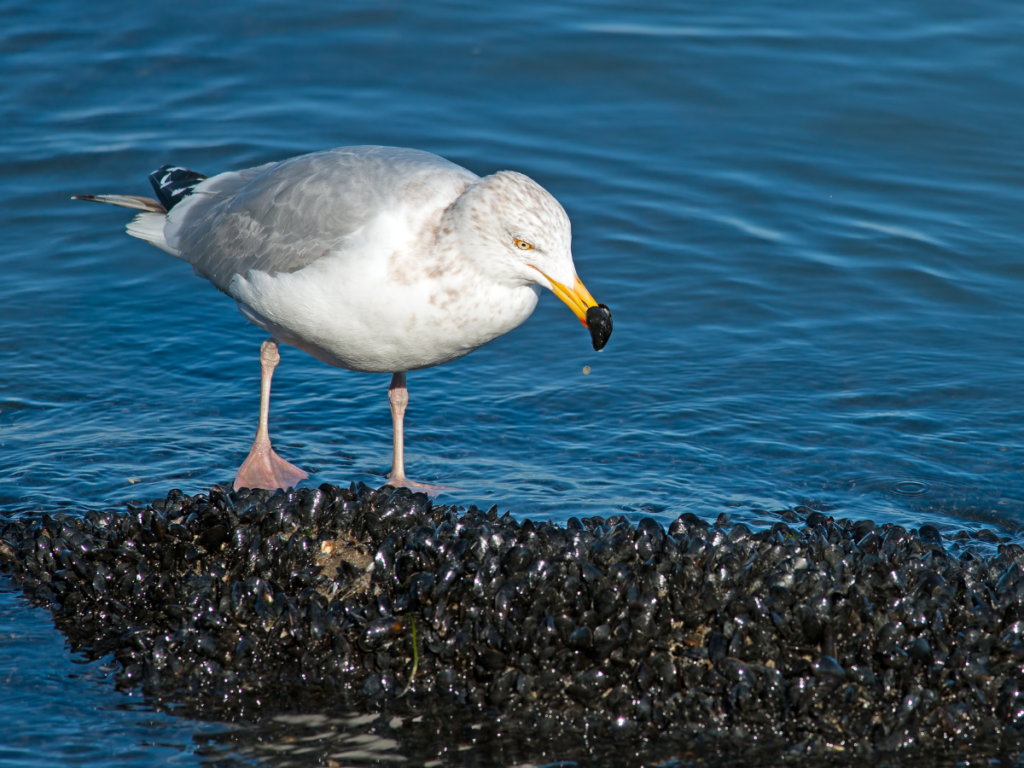
Marbled Murrelet
The marbled murrelet for example feeds below the surface, diving to the depths to attain herring, sand perch and other small fishes.
Herring Gull
Herring gulls known as the quintessential “seagull” of Alaska inhabit open ocean waters as well as near shore waters with surrounding lakes and river systems. One of the herring gulls’ unique adaptations to life on the sea is the fact they can remove salt from saltwater through their eyes in order to have a steady supply of drinking water. Now that’s impressive!
Common Murre
Common murres are abundant in the Gulf of Alaska, feeding on small bait fishes, worms and mollusks and breeding in large colonies. One of the common murres coolest traits lie in the fact that it’s the deepest diving bird in the northern hemisphere, having been recorded at depths of 550 feet!
What fish can we see on our Ketchikan whale watching and wildlife viewing excursion?
Salmon Viewing Ketchikan, Alaska
Many of the fish in Alaskan waters are subsurfaced and can’t be seen from the topside of the water level by boat. With that being said, there are species that are acrobatic and break the surface of the water while jumping. Salmon are the most commonly seen fish species leaping from the water and splashing down on their sides. Many visitors to Ketchikan can see this happening at the Creek Street bridge in the historic downtown district of Ketchikan. They actually do this in order to hit their stomachs bluntly on the water to loosen the egg sac before going upstream to lay their eggs. During the height of the salmon runs in July and August pink and silver salmon can be seen displaying these acrobatics at will for as far as the eye can see. The other fish that can be seen on the surface are bait fish such as herring and candlefish. Generally flickering on the surface or boiling from beneath as predators push them up from beneath to herd them and feed. This can be quite the sight as humpback whales bubble net feeding pushing up huge bait balls to the surface, which allows sea birds to also dive down to feed, creating a chaos of a wide open-feeding phenomena!
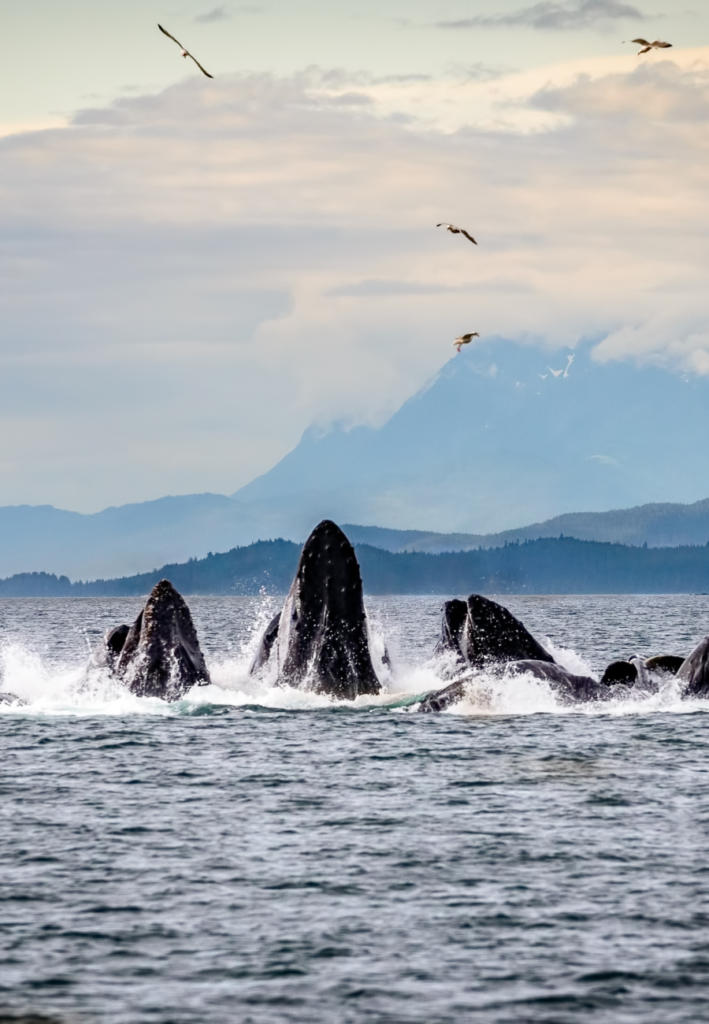
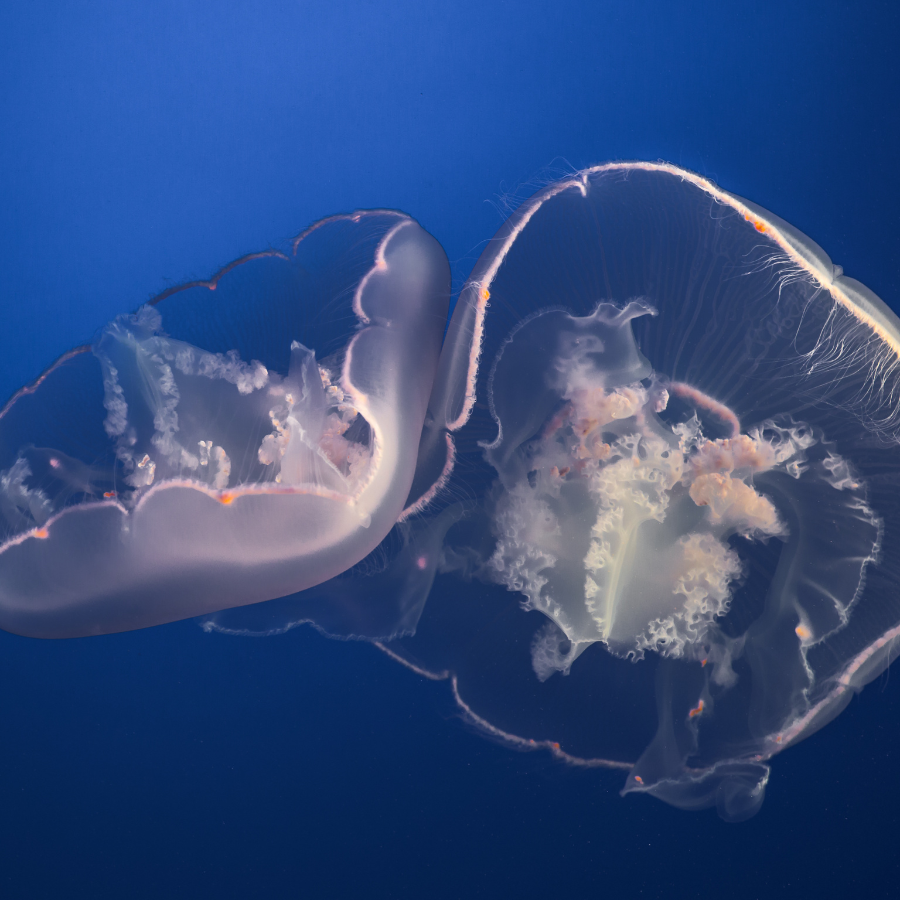
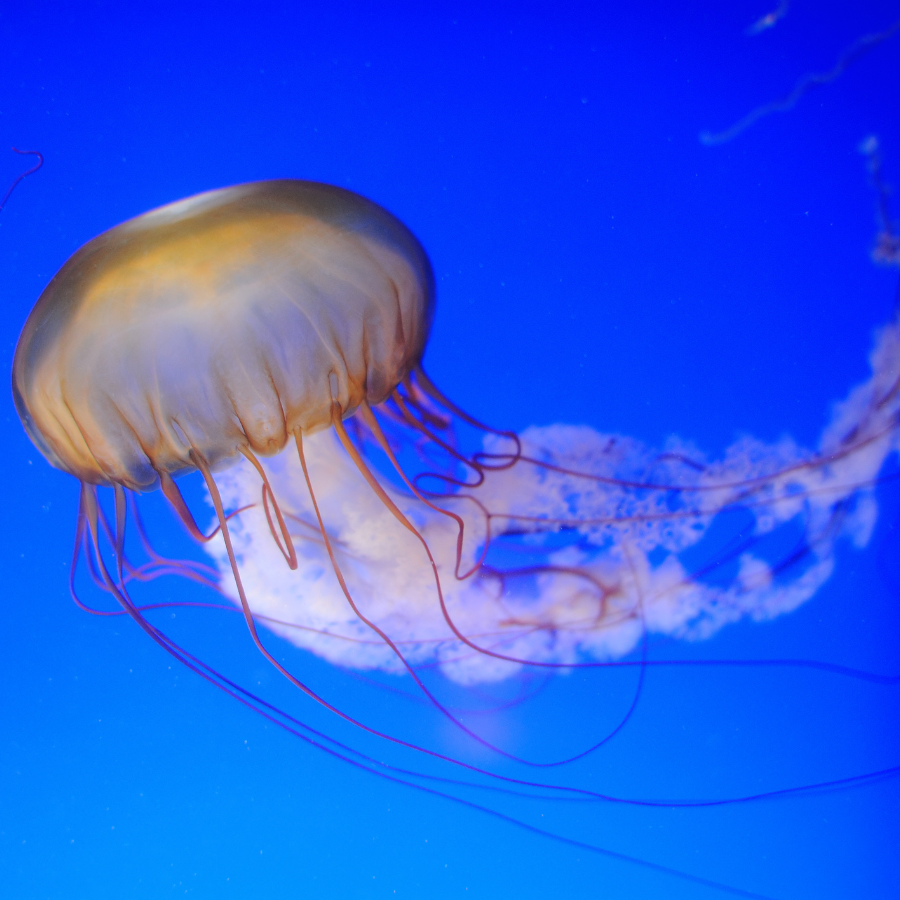
JELLYFISH IN ALASKA?
Yes, there are jellyfish in Alaska! The two most common to be seen on your Ketchikan whale watching and wildlife viewing excursion are the moon jelly and the lion’s mane jelly.
Lion’s mane jellyfish are known as one of the largest species of jellyfish in the world. Known for their bright red color in adults and their flowing whisky tentacles resembling a lion’s mane. These jellyfish sting, but are so impressively beautiful propelling in the water.
Moon jellyfish on the other hand lack the color of lion’s mane jellyfish, as well as the sting. Resembling a tighter circular shape and a clear translucent look, moon jellies are commonly seen in Alaskan waters throughout the water column, including near the surface.
Make sure to check out our resource article on Alaska’s internal zone. This article will illustrate what intertidal life you may see on a Ketchikan whale watching and wildlife excursion. Sea stars, sea cucumbers, urchins, bull kelp forests, rockweed, mink, otters and seals to name a few of the species mentioned.
Fun Facts Ketchikan Wildlife: Whale Watching and Wildlife Tour Viewing
1. Nowhere in the world will you find more bald eagles than Southeast Alaska!
2. Ravens have amazing vocal capabilities, incredible acrobatic skills and freakish intelligence.
3. Herring Gulls can remove salt from saltwater through their eyes, in order to have a steady supply of drinking water.
4. The common murre is the deepest diving bird in the northern hemisphere and has been recorded at depths of up to 550 feet.
5. Salmon runs in Ketchikan reach the height in July and August when millions of salmon return to their home streams to spawn.
6. Lion’s mane jellyfish are one of the largest species of jellyfish in the world.
